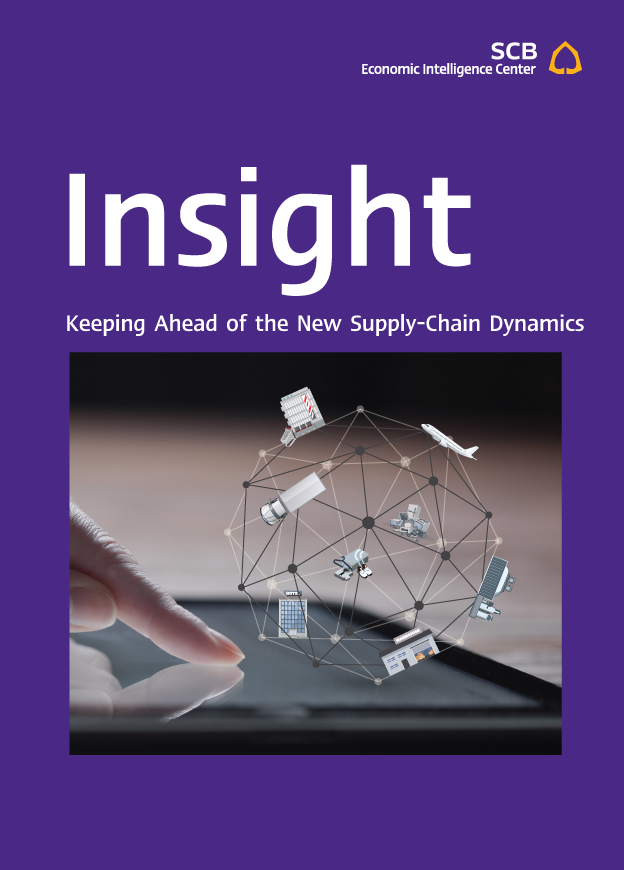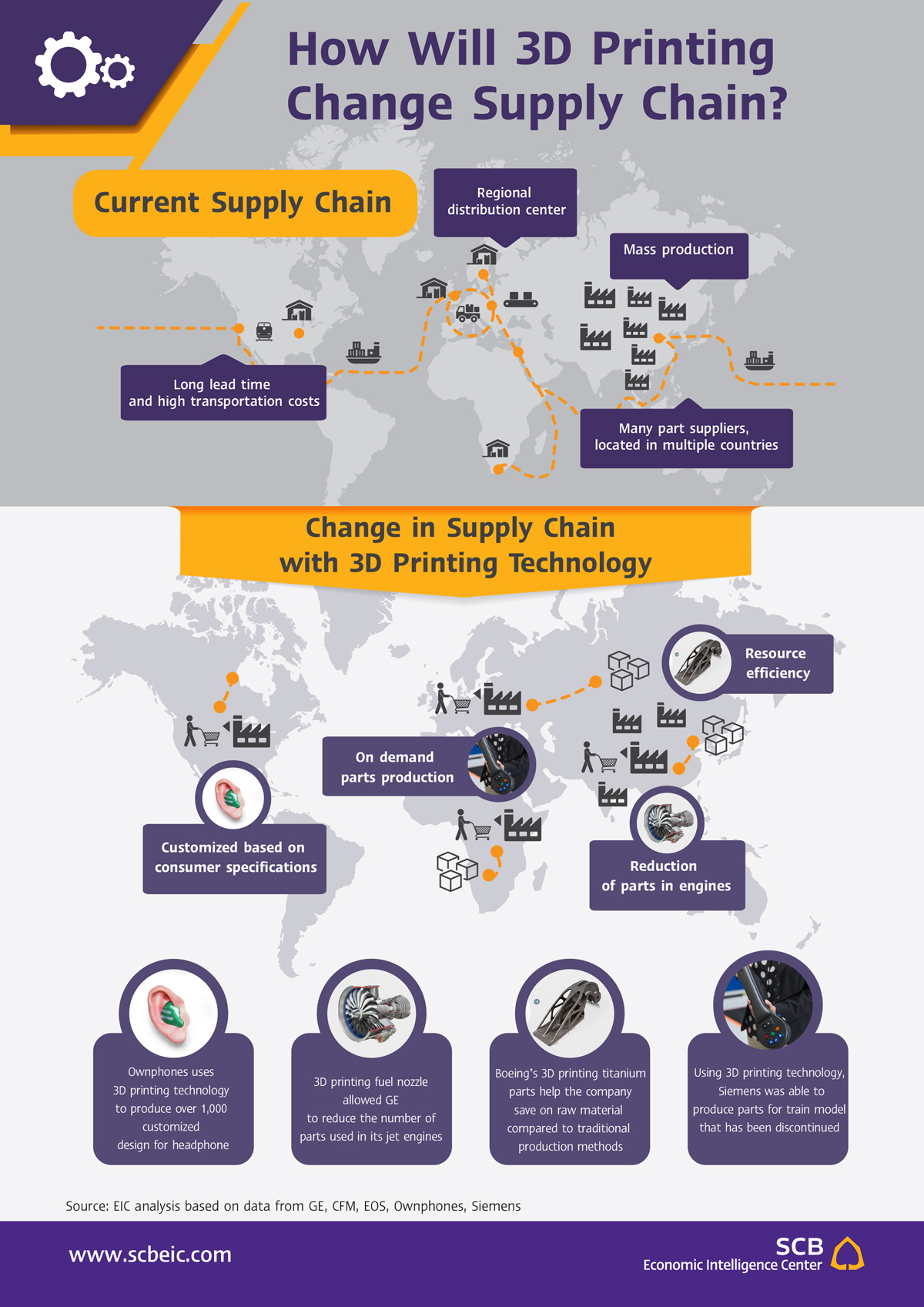Keeping Ahead of the New Supply-Chain Dynamics
Technological advancements have greatly benefited consumers during the past decade. Consumers can now choose from seemingly unlimited products and services, compare prices in real time, and access detailed information on a product's origins and performance. It's clear that technology will keep changing how consumers behave and keep raising their expectations. Now firms throughout the supply chain need to be proactive in adapting to this consumer-led environment and be ready to cope with new technologies and innovations that will disrupt their businesses. Our aim in this publication is to present a conceptual framework to help Thai players navigate the changes in global supply chains. Thinking systematically will help companies recognize the potential opportunities and disruptions so that they can stay competitive.

Contents
- Executive Summary
- Chapter 1: Re-centering the supply chain on consumers
- Chapter 2: Keep an Eye on How Innovations Transform Supply Chains
- Epilogue
Technological advancements have greatly benefited consumers during the past decade. Consumers can now choose from seemingly unlimited products and services, compare prices in real time, and access detailed information on a product's origins and performance. It's clear that technology will keep changing how consumers behave and keep raising their expectations. Now firms throughout the supply chain need to be proactive in adapting to this consumer-led environment and be ready to cope with new technologies and innovations that will disrupt their businesses. Our aim in this publication is to present a conceptual framework to help Thai players navigate the changes in global supply chains. Thinking systematically will help companies recognize the potential opportunities and disruptions so that they can stay competitive.
EIC suggests 3 C’s for businesses to thrive in the era of consumer-led supply chain:
1. Collaborate – companies in the supply chain need to understand that consumers are the true determinants of which products and services need to be offered and at what prices. Firms should be ready to adapt quickly because consumer needs keep changing. Businesses have to work together more closely so that they can better manage production and inventory management.

2. Customize – companies need to be prepared to increase their use of mass customization, since this is an important way to meet today's ever-diversifying customer needs. Investing in technology to help collect data from consumers and analyzing consumer preferences is how businesses can offer a wider range of products and services tailored to their customers. This will also help companies streamline their supply chain management
3. Control – companies throughout the supply chain must be ready to meet higher consumer expectations regarding social and environmental factors. Companies need to not only improve their business operations, but also how they communicate about themselves on social media. After all, social media is the primary stage where consumers express their views on social and environmental responsibility. Any company that wants to enter into the supply chain of a big brand has to meet high standards on social and environmental issues. Small businesses should strongly consider upgrading themselves in this area.Innovation, whether a new product or a new business model, can disrupt the supply chain. Innovation will have a severe impact on the businesses that it disrupts. Companies that do not learn to manufacture the new products and use new technology in their operations won't be able to enter into innovation-driven supply chains. This is especially true for tech-related products, whose manufacturers will be forced to monitor rapidly changing technologies very carefully if they want to stay viable. Changes will also result from new business models, such as business platforms and products offered in the form of services. The rise of new models is a particularly fast-growing trend at this time, and it will have an impact on companies and supply chains in adjacent industries. Forward-thinking business models will transform consumer behavior by offering services that are different from those of legacy businesses. Some businesses in the supply chain are shrinking – for example, middlemen like wholesalers and agents – under pressure from online business platforms, e.g., Alibaba and other B2B marketplaces.
Because of these factors, a supplier must be prepared to continually upgrade its products and keep up with new innovations so that it does not forfeit its place in the supply chain.
How can Thai industries gain footholds in global supply chains? Understanding technology and consumer behavior is the first step in developing a plan to join a new supply chain. EIC recommends three main actionable steps for business management to consider: 1) Map out a plan for technology use within the business in order to maximize efficiency, 2) invest in human resources and an optimal business structure, and 3) develop supply chain flexibility. Businesses have the opportunity to profit from technology, whether it is finding new markets resulting from new consumer demands or gaining the benefits of performance optimization such as cost reduction, operational risk management and higher customer satisfaction.